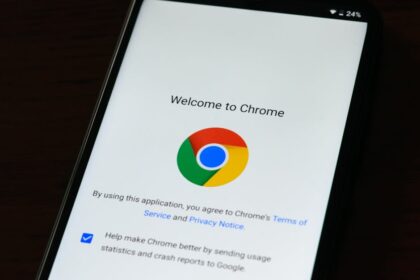The transition from a desktop-centric to a mobile-first digital ecosystem marks one of the most significant shifts in search engine optimization history. For years, Google primarily used the desktop version of a website’s content for indexing and ranking purposes. However, with the proliferation of smartphones and the overwhelming dominance of mobile search, this paradigm became outdated. The advent of mobile-first indexing (MFI) represented not merely an update but a fundamental reorientation of Google’s core indexing methodology, cementing the essential role of mobile experiences in online visibility.
Understanding the Paradigm Shift: From Desktop to Mobile-First Indexing
Mobile-first indexing means that Google predominantly uses the mobile version of your content for indexing and ranking. Previously, the desktop version was the primary canonical source. Google’s algorithms would crawl, index, and understand content primarily through the lens of a desktop browser. While mobile friendliness was a ranking factor, it was secondary to the desktop content’s perceived authority and relevance. This created a potential disconnect: a site might rank well based on its desktop content, even if its mobile experience was subpar or incomplete, leading to a poor user journey for the majority of searchers.
The shift began in 2016, with Google announcing the experimental rollout of mobile-first indexing. This period allowed webmasters to prepare and adapt. By March 2018, Google began migrating sites to MFI in earnest, and by 2021, MFI became the default for all new websites. For older sites, the transition was phased, but the clear message was that mobile content would dictate rankings. This wasn’t just about mobile-friendliness; it was about content parity, speed, and overall user experience on mobile devices becoming the foundational elements of a site’s search presence.
The rationale behind this monumental shift is rooted in user behavior. Statistics consistently show that a significant majority of internet users access information, products, and services via mobile devices. Mobile search queries often outnumber desktop queries globally. If Google’s primary index was based on a desktop version, and most users were interacting with a mobile version, there was a risk of misrepresenting the true content and user experience of a website. For example, if a desktop site had extensive valuable content but its mobile counterpart truncated or omitted crucial sections, Google’s desktop-first index would reflect the richer content, leading to a user clicking through on mobile only to find a diminished experience. Mobile-first indexing resolves this by ensuring that what Google sees and evaluates is what the majority of its users will experience. This ensures a more accurate, relevant, and user-centric search results page.
The Imperative for Mobile-First: Why It Matters Profoundly
The “essential role” of mobile-first indexing cannot be overstated. It is no longer an optional optimization; it is the default operational mode for Googlebot. Neglecting mobile optimization now directly translates to diminished organic visibility, irrespective of how robust a desktop site might be.
-
Alignment with User Behavior: The internet is now primarily accessed on mobile. From research to purchases, social media to entertainment, smartphones are the primary gateway. Google’s core mission is to organize the world’s information and make it universally accessible and useful. To achieve this, its index must reflect how users actually interact with the web. If a site performs poorly on mobile, it inherently provides a poor user experience for the majority, which Google aims to mitigate.
-
Direct Impact on Ranking and Visibility: With MFI, if your mobile site is missing content, slow, or difficult to navigate, those deficiencies directly influence your rankings. Google’s algorithms are now evaluating your mobile site as the canonical version. This means that if valuable information, internal links, or structured data are absent from your mobile version but present on your desktop, they will not be considered for ranking purposes. This can lead to significant drops in search engine results pages (SERPs) and, consequently, organic traffic.
-
Enhanced User Experience (UX): MFI forces webmasters to prioritize mobile UX. A positive user experience is paramount for engagement, conversions, and brand loyalty. Factors like fast loading times, easy navigation, readable text, and properly sized touch elements on mobile are critical. Google explicitly rewards sites that offer superior UX, and MFI ensures that this reward mechanism is applied to the version of the site most users encounter.
-
Consistency in Search Results: MFI promotes consistency. What Google indexes and ranks is what the user is likely to experience. This reduces user frustration, bounce rates, and improves the overall quality of Google’s search results. Searchers are less likely to encounter a well-ranked site that then provides a frustrating mobile experience, as Google’s evaluation is now based on that mobile experience itself.
-
Future-Proofing SEO Strategies: As technology evolves, mobile devices continue to innovate with features like voice search, augmented reality, and tighter integration with local services. A strong mobile-first foundation ensures that websites are better positioned to leverage these emerging technologies and adapt to future search trends, which will undoubtedly continue to be mobile-centric.
Core Pillars of Mobile-First Optimization for Success
Achieving success under mobile-first indexing demands a holistic approach, focusing on several critical areas that contribute to a superior mobile experience and accurate indexing.
1. Responsive Design: The Gold Standard
Responsive web design (RWD) is Google’s recommended approach for mobile optimization. RWD ensures that a website’s layout and content automatically adjust to the screen size and orientation of the device being used, whether it’s a desktop, tablet, or smartphone. This is achieved through flexible grids, images, and CSS media queries.
-
Implementation Benefits:
- Single URL: All content resides on a single URL, simplifying crawling and indexing for Googlebot. This eliminates the need for complex canonicalization strategies or separate mobile URLs, reducing potential errors.
- Reduced Development and Maintenance: Managing one codebase for all devices is significantly more efficient than maintaining separate desktop and mobile sites.
- Consistent User Experience: Users encounter a consistent brand experience across devices, fostering familiarity and trust.
- Easier Link Building: All backlinks point to a single URL, consolidating link equity and improving domain authority.
- Improved Crawl Efficiency: Googlebot only needs to crawl one version of the site, which can lead to more efficient indexing and quicker detection of changes.
-
Key Considerations for Responsive Design:
- Fluid Grids and Flexible Images: Ensure layout and media adapt seamlessly.
- Media Queries: Use CSS media queries to apply different styles based on screen characteristics.
- Viewport Meta Tag: Include
in theof your HTML to instruct browsers to render the page at the device’s width and prevent scaling issues. - Prioritize Content Flow: Design content to flow logically and legibly on smaller screens.
2. Mobile Content Parity: The Cornerstone of MFI
This is arguably the most critical aspect of mobile-first indexing. Mobile content parity means that the content, including text, images, videos, structured data, internal links, and external links, on your mobile site is identical to, or at least semantically equivalent to, the content on your desktop site.
-
Common Pitfalls to Avoid:
- Hidden Content: Don’t hide content behind tabs, accordions, or carousels on mobile if it’s visible on desktop, unless it’s implemented carefully with proper semantic HTML and Google can clearly see the content without user interaction. While Google has stated that content within accordions/tabs can be indexed, it’s generally safer for critical content to be immediately visible. The desktop content is still king for content availability when MFI is concerned. If content is truncated or removed entirely from the mobile version, Google will not see it, and it will not count towards ranking.
- Truncated Text: Avoid automatically shortening blog posts or product descriptions on mobile. If it’s important on desktop, it’s important on mobile.
- Missing Images/Videos: Ensure all relevant media assets are present on mobile. Use responsive images (
srcsetandsizesattributes) to serve optimized images for different screen sizes. - Absent Internal Links: All internal links that are present on the desktop version should also be on the mobile version, providing complete navigational pathways and distributing link equity.
- Missing Structured Data: Schema markup should be present on the mobile version, as Google uses it to understand content and provide rich results. If it’s only on desktop, it might be ignored.
- Reduced Number of Product Reviews: For e-commerce sites, ensure the full complement of product reviews and user-generated content is available on mobile, as this contributes to content depth and trust signals.
-
Auditing for Parity:
- Manually compare key pages on desktop and mobile.
- Use Google Search Console’s URL Inspection tool (select Googlebot Smartphone) to see how Google views your mobile page.
- Employ site crawling tools configured to crawl as Googlebot Smartphone.
3. Mobile Speed and Performance: The Core Web Vitals Era
Page speed has long been a ranking factor, but its importance has surged with mobile-first indexing and the introduction of Core Web Vitals (CWV). CWV metrics (Largest Contentful Paint, First Input Delay, Cumulative Layout Shift) directly measure user experience related to loading, interactivity, and visual stability, and are crucial for mobile.
-
Key Optimization Strategies:
- Image Optimization: Compress images, use modern formats (WebP), implement lazy loading for images outside the initial viewport, and use responsive images.
- Minify CSS, JavaScript, and HTML: Remove unnecessary characters, comments, and whitespace to reduce file sizes.
- Leverage Browser Caching: Allow browsers to store parts of your site, reducing load times for returning visitors.
- Improve Server Response Time: Optimize your server infrastructure, choose a reliable hosting provider, and consider a Content Delivery Network (CDN) to serve content faster from geographically closer servers.
- Eliminate Render-Blocking Resources: Ensure CSS and JavaScript that aren’t critical for the initial page load are deferred or loaded asynchronously.
- Reduce Third-Party Scripts: Excessive analytics, ads, or tracking scripts can significantly slow down mobile pages. Audit and minimize their usage.
- Prioritize Above-the-Fold Content: Ensure critical content loads first (critical CSS).
-
Tools for Assessment:
- Google PageSpeed Insights: Provides detailed reports and recommendations for both mobile and desktop.
- Lighthouse: An open-source, automated tool for improving the quality of web pages (integrated into Chrome DevTools).
- Google Search Console: The Core Web Vitals report identifies problematic pages across your site.
4. Mobile User Experience (UX): Beyond Speed and Content
Even with fast loading and complete content, a poor mobile UX can deter users and signal negativity to search engines.
- Key UX Elements:
- Easy Navigation: Implement clear, concise navigation menus (e.g., hamburger menus for complex sites, prominent calls-to-action). Ensure links are easily tappable.
- Appropriate Touch Targets: Buttons and links should be large enough and have sufficient spacing to be easily tapped with a finger without accidentally hitting adjacent elements. Google recommends targets of at least 48×48 pixels.
- Legible Font Sizes: Use font sizes that are readable on small screens without requiring pinching and zooming. Google recommends a base font size of 16px.
- Avoid Intrusive Interstitials and Pop-ups: While some are permissible (e.g., for age verification, cookie consent), aggressive or large interstitials that block content on mobile can be penalized by Google and degrade user experience.
- Forms and Input Fields: Design forms for mobile with large input fields, appropriate input types (e.g., numeric keypad for phone numbers), and clear validation.
- Accessibility: Ensure your mobile site is accessible to users with disabilities, including proper alt text for images, ARIA attributes, and keyboard navigation support.
- No Horizontal Scrolling: Content should fit within the device width, avoiding the need for users to scroll horizontally.
5. Structured Data and Schema Markup: Ensuring Parity for Rich Results
Structured data helps search engines understand the context of your content, leading to rich results (e.g., star ratings, recipes, events in SERPs). For MFI, it’s crucial that structured data implementation on your mobile site mirrors that on your desktop site.
- Key Considerations:
- JSON-LD Preferred: Google generally recommends JSON-LD for structured data implementation, as it can be injected directly into the HTML or dynamically.
- Consistency is Key: Ensure all types of schema markup (e.g., Product, Article, LocalBusiness, FAQPage) present on the desktop version are also present and correctly implemented on the mobile version.
- Google Search Console Rich Results Test: Use this tool to validate your structured data for both desktop and mobile versions.
6. Robots.txt and Meta Tags: Controlling Crawling and Indexing
While responsive design simplifies this, sites using separate mobile URLs (m.dot sites) or dynamic serving need to be especially careful with their robots.txt and meta tags.
- For Responsive Design and Dynamic Serving: Ensure your
robots.txtfile doesn’t block Googlebot Smartphone from crawling any CSS, JavaScript, or images that are essential for rendering the page. Disallowing these resources will prevent Google from fully understanding your mobile page. - For Separate Mobile URLs (Legacy m.dot sites):
- Canonicalization: Use
rel="canonical"on the mobile page pointing to the desktop page, andrel="alternate"on the desktop page pointing to the mobile page. This is a complex setup and prone to errors; responsive design is far preferable. - Noindex Tags: Do not use
noindexmeta tags on your mobile pages, as this will prevent them from being indexed. Ensure anynoindextags are only on desktop if you intend to only index desktop, which is counter to MFI. However, the best practice is to have indexable mobile content.
- Canonicalization: Use
7. Technical SEO for Mobile: Specific Considerations
- Hreflang for Internationalization: If you target different languages or regions, ensure your
hreflangannotations are consistent across desktop and mobile versions. If you have separate mobile URLs, both versions should link to the corresponding mobile and desktop pages for other languages/regions. - AMP (Accelerated Mobile Pages): While not mandatory, AMP can provide extremely fast mobile page loads. If you use AMP, ensure the content on your AMP pages matches the canonical mobile content. However, with Core Web Vitals and general speed optimizations, AMP is less of a strict requirement than it once was, as a well-optimized standard HTML page can also achieve excellent speeds.
- JavaScript Rendering: Googlebot can render JavaScript, but it’s not instantaneous and can encounter issues.
- Pre-rendering/Server-Side Rendering (SSR): Consider these techniques if your content heavily relies on JavaScript, ensuring that the initial HTML sent to the browser includes the critical content.
- Hydration: For Single Page Applications (SPAs), ensure proper hydration where client-side JavaScript takes over from server-rendered content without a content flash.
- Verify Rendered Content: Use Google Search Console’s URL Inspection tool (“View crawled page” -> “More info” -> “HTML” and “Screenshot”) to ensure your JavaScript-rendered content is fully visible to Googlebot Smartphone.
- Avoid Blocking JS: Ensure your robots.txt isn’t blocking essential JavaScript files that render crucial content.
Implementing and Auditing for Mobile-First Success
A continuous cycle of implementation, monitoring, and refinement is crucial for sustained success under mobile-first indexing.
1. Leveraging Google Search Console (GSC): Your MFI Dashboard
GSC is the indispensable tool for understanding how Google views your site, especially concerning mobile-first indexing.
- Mobile Usability Report: This report identifies pages with mobile usability issues (e.g., small font sizes, unclickable elements, content wider than screen). Address these errors promptly.
- URL Inspection Tool: This is invaluable. Enter any URL and select “Googlebot Smartphone” as the crawler. You can see how Google renders the page, inspect the HTML, and check for indexing issues. Use the “Live Test” to see real-time issues.
- Crawl Stats Report: Monitor how Googlebot Smartphone crawls your site. Look for spikes or drops in crawl activity that might indicate issues.
- Index Coverage Report: This report shows which pages are indexed and any indexing errors. Ensure your important mobile pages are indexed. Look for “Submitted and indexed” pages.
- Core Web Vitals Report: Monitor your site’s performance against the CWV metrics for both mobile and desktop. Prioritize fixing “Poor” URLs.
2. Comprehensive Site Audits: Going Beyond GSC
While GSC provides Google’s perspective, third-party tools offer deeper insights and broader audits.
- Google Lighthouse: Available in Chrome DevTools or via the PageSpeed Insights tool, Lighthouse audits performance, accessibility, best practices, SEO, and PWA capabilities. Run audits with mobile emulation.
- Screaming Frog SEO Spider: Configure this crawler to crawl as Googlebot Smartphone. This allows you to identify issues like missing content, broken links, or blocked resources on the mobile version of your site at scale.
- SEMrush, Ahrefs, Moz Pro: These comprehensive SEO platforms offer site audit features that can identify mobile-specific issues, including content parity, speed, and technical problems.
- Manual Review: Nothing replaces a manual review of key pages on actual mobile devices. Check different screen sizes and operating systems. Look for visual discrepancies, navigation difficulties, and performance lags.
3. Monitoring and Maintenance: An Ongoing Commitment
SEO is not a one-time fix. Mobile-first indexing requires continuous vigilance.
- Regular Audits: Schedule periodic comprehensive mobile SEO audits.
- Stay Updated with Google: Google frequently updates its algorithms and guidelines. Follow official Google Webmaster Central Blog and other reputable SEO news sources.
- User Feedback: Pay attention to user complaints or feedback regarding mobile experience.
- Competitor Analysis: Regularly analyze how competitors are performing on mobile and identify best practices.
4. Testing Methodologies:
- Real Device Testing: The most accurate way to test your mobile site. Use a variety of smartphones and tablets from different manufacturers (Apple, Android) and different network conditions (Wi-Fi, 4G, 5G).
- Browser Emulators: While helpful for initial checks, browser emulators in development tools (like Chrome DevTools) are not perfect replicas of real device behavior and performance. Use them for quick checks, but supplement with real device testing.
- Cross-Browser Testing: Test on different mobile browsers (Chrome, Safari, Firefox, Samsung Internet) to ensure consistent rendering and functionality.
Common Mobile-First Indexing Challenges and Solutions
Despite the clear guidelines, many websites encounter specific challenges during their mobile-first transition or ongoing optimization.
-
Discrepancies Between Desktop and Mobile Versions:
- Challenge: Content, internal links, or structured data are present on desktop but missing or truncated on mobile. Google indexes the mobile version, so this critical information is ignored, leading to lower rankings.
- Solution: Conduct thorough content parity audits. Use Google Search Console’s URL Inspection tool (Googlebot Smartphone) and manual comparison to ensure all valuable elements are present on the mobile version. If using dynamic serving or separate URLs, ensure your configuration serves identical content to Googlebot Smartphone as it does to desktop Googlebot. For responsive design, verify that content isn’t hidden via
display: noneCSS for critical elements that Google might interpret as trying to hide content.
-
Slow Mobile Page Speed:
- Challenge: Large image files, unoptimized CSS/JavaScript, excessive third-party scripts, or slow server response times make the mobile page load slowly, negatively impacting Core Web Vitals and user experience.
- Solution: Implement comprehensive speed optimization strategies: image compression and lazy loading, minification of code, browser caching, efficient server configuration, and CDN usage. Use PageSpeed Insights and Lighthouse to identify specific bottlenecks and actionable recommendations. Prioritize fixing issues that impact LCP and FID.
-
Poor Mobile User Experience (UX):
- Challenge: Hard-to-tap elements, small font sizes, intrusive pop-ups, or complicated navigation lead to high bounce rates and poor user signals.
- Solution: Adopt responsive design best practices: use readable font sizes (16px+), ensure adequate spacing for touch targets (48x48px), simplify navigation with intuitive menus, and avoid aggressive interstitials. Test extensively on actual mobile devices to identify usability frustrations.
-
Incorrect Canonicalization:
- Challenge: For sites with separate mobile URLs, incorrect
rel="canonical"orrel="alternate"tags can confuse Google, leading to indexing issues (e.g., mobile pages not being indexed, or desktop pages being favored incorrectly). - Solution: For responsive design, canonical tags should simply point to themselves (no mobile-specific canonical required). For separate mobile URLs, ensure the desktop page has a
rel="alternate"tag pointing to the mobile version, and the mobile page has arel="canonical"tag pointing back to the desktop version. Double-check allhreflangannotations if you have international versions.
- Challenge: For sites with separate mobile URLs, incorrect
-
Issues with Dynamic Serving or Separate URLs:
- Challenge: These configurations are more complex and prone to errors. Dynamic serving might not correctly identify Googlebot Smartphone and serve it the wrong content. Separate URLs risk canonicalization issues or content discrepancies.
- Solution:
- Dynamic Serving: Use the
Vary: User-AgentHTTP header to signal to caches that the page content varies based on the user agent. Ensure your server correctly detects Googlebot Smartphone’s user agent and serves it the mobile-optimized content. - Separate URLs (m.dot sites): As mentioned above, correct
rel="canonical"andrel="alternate"tags are crucial. However, Google strongly recommends migrating to responsive design due to the inherent complexity and potential for errors with separate URLs.
- Dynamic Serving: Use the
-
JavaScript Rendering Issues on Mobile:
- Challenge: Content that relies heavily on client-side JavaScript might not be fully rendered or indexed by Googlebot Smartphone, especially if the JavaScript takes a long time to execute or if necessary resources are blocked.
- Solution: Prefer server-side rendering (SSR), pre-rendering, or static site generation (SSG) for critical content. Ensure that all JavaScript, CSS, and other resources necessary for rendering the mobile page are accessible to Googlebot (not blocked by
robots.txt). Use the URL Inspection tool in GSC to “Test Live URL” and inspect the rendered HTML to confirm Google sees all your content. Ensure adequate server resources to handle Googlebot’s rendering requests.
-
Lack of Mobile Content (Semantic Parity):
- Challenge: While content might be present, its semantic meaning or structure might be different, leading to Google misunderstanding its context or value compared to the desktop version.
- Solution: It’s not just about character count; it’s about ensuring the same depth, detail, and quality of information. Review mobile content for conciseness that sacrifices substance. Ensure headings, subheadings, and overall information architecture on mobile logically mirror the desktop version. This includes the availability of all critical product information, service details, and informational content.
Beyond the Basics: Advanced Mobile-First Strategies
As the mobile web evolves, so too must mobile-first SEO strategies.
-
Progressive Web Apps (PWAs):
- Concept: PWAs leverage modern web capabilities to deliver an app-like user experience. They are reliable (work offline), fast (instant loading), and engaging (push notifications, add to home screen).
- SEO Relevance: PWAs inherently embody many mobile-first principles: they are responsive, often very fast, and provide an excellent user experience. Google indexes PWAs like any other website. Their app-like features can improve engagement metrics, which indirectly benefit SEO. They represent a significant step beyond traditional responsive design towards an optimized mobile ecosystem.
-
Optimizing for Voice Search on Mobile:
- Trend: Voice assistants (Google Assistant, Siri, Alexa) are predominantly used on mobile devices. Voice queries are typically longer, more conversational, and question-based.
- SEO Relevance:
- Featured Snippets: Voice search often pulls answers directly from featured snippets. Optimizing for these (answering questions concisely, using clear headings) is crucial.
- Long-Tail Keywords: Focus on natural language, conversational long-tail keywords, and question phrases.
- Local SEO: Many voice queries are for local information (“nearest coffee shop”). Ensure your Google My Business profile is optimized.
- Readability: Content should be easy to understand and “speakable,” as if it were being read aloud.
-
Mobile-Specific Keyword Research:
- Nuance: While core keywords remain important, mobile users often search differently. They might use shorter, more immediate queries when on the go, or longer, question-based queries for voice search.
- Strategy: Analyze mobile search query data in Google Search Console. Consider user intent variations between desktop and mobile. Tools like AnswerThePublic can help identify common questions. Optimize content for immediate answers and location-based relevance.
-
Local SEO Considerations for Mobile:
- Proximity and Intent: A vast majority of “near me” and local searches occur on mobile devices.
- Optimization:
- Google My Business (GMB): Ensure your GMB profile is complete, accurate, and regularly updated with photos, hours, and posts.
- NAP Consistency: Maintain consistent Name, Address, Phone number across all online directories.
- Local Landing Pages: For businesses with multiple locations, create optimized, mobile-friendly landing pages for each location.
- Reviews: Encourage and respond to customer reviews, as they significantly influence local rankings.
- Click-to-Call Functionality: Prominently display clickable phone numbers on mobile pages.
-
The Role of AI and Machine Learning in Mobile Indexing:
- Understanding Context: Google’s AI (e.g., RankBrain, BERT, MUM) helps it understand the intent behind complex queries, especially conversational ones common on mobile. It also helps in evaluating content quality and relevance.
- E-A-T (Expertise, Authoritativeness, Trustworthiness): AI-driven algorithms increasingly assess E-A-T signals. For mobile-first, ensuring your mobile content clearly conveys expertise and trust is vital, as this version dictates evaluation.
- Visual Search: Technologies like Google Lens, which are mobile-first, allow users to search using images. Optimizing images with descriptive alt text, proper file names, and structured data is becoming increasingly important for these visual search avenues.
-
Future Trends in Mobile Search:
- Augmented Reality (AR): As AR capabilities in mobile devices grow, search engines may integrate AR experiences directly into search results (e.g., “view product in your room”). Websites will need to consider how to provide AR-ready content.
- Ever-Increasing Speed Expectations: User patience for slow-loading pages will continue to dwindle. Optimizing for sub-second load times will become even more critical.
- Personalization: Mobile search is highly personalized based on location, search history, and app usage. Understanding user intent at a granular level and serving highly relevant content will be key.
- Direct Answers and Zero-Click SERPs: Google aims to answer queries directly within the SERPs, especially on mobile, reducing the need for users to click through. Optimizing for featured snippets, knowledge panels, and rich results becomes paramount.
- Cross-Device Journey: While mobile-first, user journeys often span multiple devices. Understanding and optimizing for this seamless transition (e.g., saving carts, continued browsing) will be important for overall user satisfaction and conversion.
The essential role of mobile-first indexing is undeniable. It’s not just a technical change; it’s a profound shift in how Google perceives and evaluates websites, driven by the reality of global internet usage. For any business or individual seeking online visibility, embracing a mobile-first mindset in all aspects of website design, content creation, and technical optimization is no longer optional. It is the fundamental prerequisite for success in the contemporary digital landscape. Ignoring this imperative is akin to building a house on shifting sand, leading to an unstable foundation for all future SEO endeavors. The future of search is mobile, and only those who adapt will thrive.











